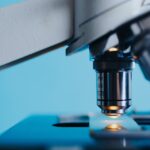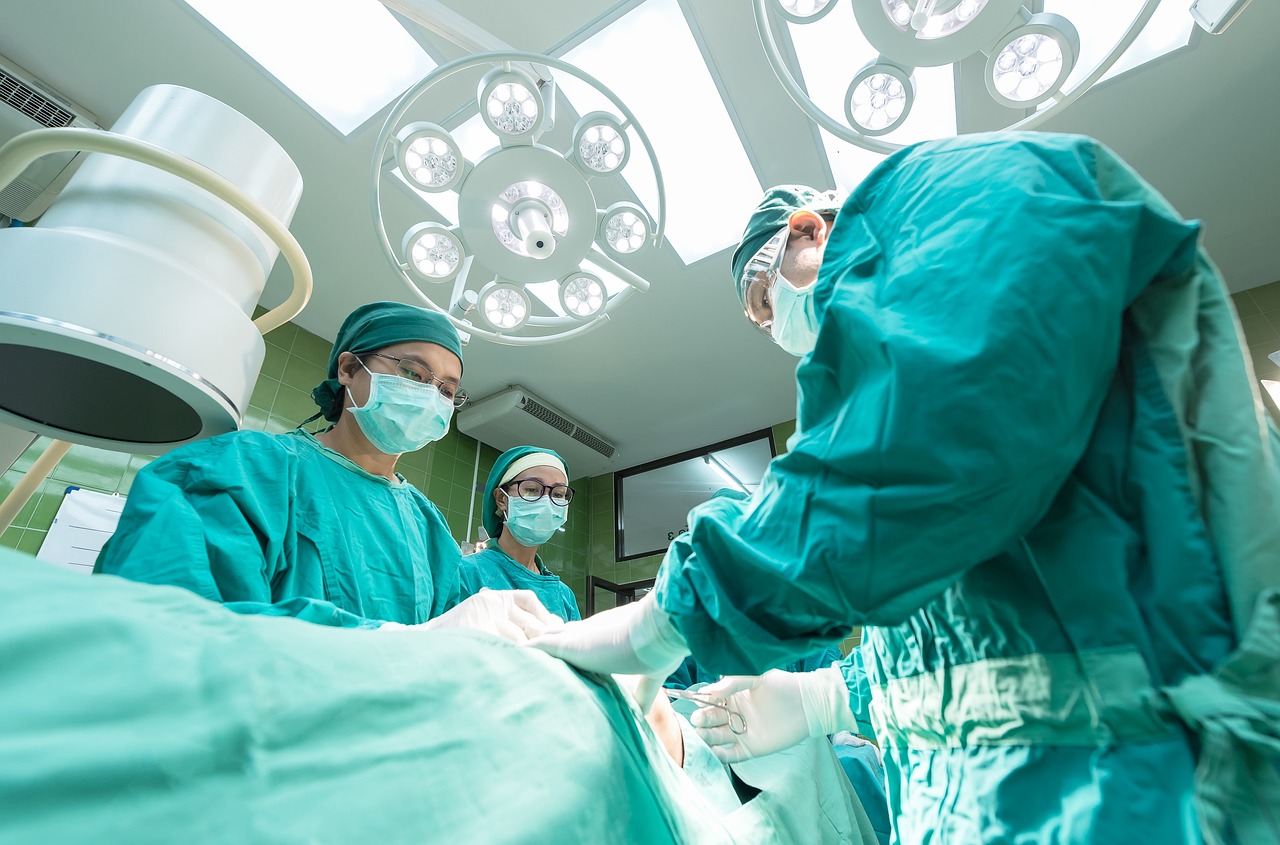Introduction
Cancer, a formidable adversary in the realm of human health, has long challenged medical science with its complexity and diversity. Early detection remains one of the most critical factors in successfully treating cancer and improving patient outcomes. With the advent of artificial intelligence (AI), there has been a revolutionary shift in the landscape of cancer diagnosis. AI algorithms, powered by machine learning and deep learning techniques, are rapidly emerging as potent tools for detecting cancer with unprecedented speed and accuracy.
Understanding Cancer Detection
Cancer Diagnosis: Current Challenges
Traditional methods of cancer diagnosis often rely on human expertise to interpret medical images such as X-rays, MRIs, and CT scans. While these methods have served as the cornerstone of cancer diagnosis for decades, they come with inherent limitations. Human interpretation is susceptible to variability and subjectivity, leading to discrepancies and delays in diagnosis. Moreover, the sheer volume of medical imaging data generated daily presents a daunting challenge for healthcare professionals to analyze efficiently.
Enter AI: The Game-Changer
AI technologies, particularly machine learning and deep learning, offer a transformative solution to the challenges faced in cancer diagnosis. By leveraging vast amounts of data, AI algorithms can detect subtle patterns and anomalies indicative of cancer with remarkable precision. Furthermore, AI systems excel in processing large datasets at unprecedented speeds, enabling rapid analysis and diagnosis. This paradigm shift has the potential to revolutionize cancer detection by significantly reducing diagnosis times and improving detection rates.
The Role of AI in Fast Cancer Detection
Image Analysis with AI
One of the primary applications of AI in cancer detection is image analysis. AI algorithms are trained on extensive datasets of medical images, allowing them to learn complex patterns associated with different types of cancer. By analyzing images with AI, healthcare providers can quickly identify suspicious areas for further examination, leading to expedited diagnosis and treatment.
Enhanced Accuracy
AI-based cancer detection systems have demonstrated superior accuracy compared to traditional methods. By eliminating human error and bias, AI algorithms can detect cancerous lesions and tumors with higher sensitivity and specificity. This heightened accuracy not only accelerates the diagnostic process but also reduces the likelihood of false positives and false negatives, thereby minimizing unnecessary interventions and ensuring appropriate treatment.
Early Detection and Prognostic Insights
One of the most significant advantages of AI in cancer detection is its ability to facilitate early diagnosis. By detecting cancer at its nascent stages, AI algorithms enable timely intervention and treatment, significantly improving patient outcomes. Moreover, AI can provide valuable prognostic insights by analyzing various factors such as tumor size, morphology, and growth rate. This information aids clinicians in formulating personalized treatment plans tailored to each patient’s specific needs.
- Leveraging Artificial Intelligence: Transforming the Paradigms of Healthcare and Sick Treatments
 Introduction As we stand at the crossroads of the digital revolution, artificial intelligence (AI) emerges as a groundbreaking innovation steering global change. It has surged as a transformative force across all business verticals, actively redefining norms and guidelines across multiple sectors, with healthcare being at the forefront. AI has played a pivotal role in ushering… Read More »Leveraging Artificial Intelligence: Transforming the Paradigms of Healthcare and Sick Treatments
Introduction As we stand at the crossroads of the digital revolution, artificial intelligence (AI) emerges as a groundbreaking innovation steering global change. It has surged as a transformative force across all business verticals, actively redefining norms and guidelines across multiple sectors, with healthcare being at the forefront. AI has played a pivotal role in ushering… Read More »Leveraging Artificial Intelligence: Transforming the Paradigms of Healthcare and Sick Treatments - Detecting Cancer with AI: Revolutionizing Diagnosis Speed
 Introduction Cancer, a formidable adversary in the realm of human health, has long challenged medical science with its complexity and diversity. Early detection remains one of the most critical factors in successfully treating cancer and improving patient outcomes. With the advent of artificial intelligence (AI), there has been a revolutionary shift in the landscape of… Read More »Detecting Cancer with AI: Revolutionizing Diagnosis Speed
Introduction Cancer, a formidable adversary in the realm of human health, has long challenged medical science with its complexity and diversity. Early detection remains one of the most critical factors in successfully treating cancer and improving patient outcomes. With the advent of artificial intelligence (AI), there has been a revolutionary shift in the landscape of… Read More »Detecting Cancer with AI: Revolutionizing Diagnosis Speed - A Deep Dive into its Applications in Medical and Military Sectors
 Introduction Object detection, a critical component of computer vision, has seen remarkable advancements in recent years, thanks to breakthroughs in deep learning algorithms and the availability of large-scale datasets. This technology, which enables machines to identify and locate objects within images or video frames, holds immense potential across various domains, including medicine and military applications.… Read More »A Deep Dive into its Applications in Medical and Military Sectors
Introduction Object detection, a critical component of computer vision, has seen remarkable advancements in recent years, thanks to breakthroughs in deep learning algorithms and the availability of large-scale datasets. This technology, which enables machines to identify and locate objects within images or video frames, holds immense potential across various domains, including medicine and military applications.… Read More »A Deep Dive into its Applications in Medical and Military Sectors - How to Develop a Robot for Forex Auto Trading
 Introduction In recent years, automated trading systems, often referred to as robots, have gained popularity in the foreign exchange (forex) market. These robots use algorithms to execute trades automatically based on predefined criteria, eliminating the need for manual intervention. Developing a robot for forex auto trading can be a complex yet rewarding endeavor, offering traders… Read More »How to Develop a Robot for Forex Auto Trading
Introduction In recent years, automated trading systems, often referred to as robots, have gained popularity in the foreign exchange (forex) market. These robots use algorithms to execute trades automatically based on predefined criteria, eliminating the need for manual intervention. Developing a robot for forex auto trading can be a complex yet rewarding endeavor, offering traders… Read More »How to Develop a Robot for Forex Auto Trading - Exploring Python Libraries
 Python has a vast ecosystem of libraries and frameworks for various purposes. Some popular Python libraries include: NumPy Pandas Matplotlib Scikit-learn Of course, here are more examples for some other popular Python libraries: TensorFlow Django Visit http://localhost:8000/ in your browser to see “Hello, Django!”. Requests NLTK Photo by Emil Widlund on Unsplash
Python has a vast ecosystem of libraries and frameworks for various purposes. Some popular Python libraries include: NumPy Pandas Matplotlib Scikit-learn Of course, here are more examples for some other popular Python libraries: TensorFlow Django Visit http://localhost:8000/ in your browser to see “Hello, Django!”. Requests NLTK Photo by Emil Widlund on Unsplash
Advancements in AI-Powered Cancer Detection
Multi-Modal Integration
Recent advancements in AI have led to the integration of multiple imaging modalities for comprehensive cancer detection. By combining data from various sources such as MRI, CT, and PET scans, AI algorithms can provide a more comprehensive assessment of cancerous lesions, enhancing diagnostic accuracy and confidence. This multi-modal approach enables healthcare providers to obtain a holistic view of the disease, facilitating more informed decision-making and treatment planning.
Real-Time Diagnosis
AI-powered cancer detection systems are evolving to offer real-time diagnosis capabilities, further expediting the diagnostic process. By leveraging cloud-based infrastructure and high-performance computing, AI algorithms can analyze medical images in near real-time, allowing for rapid interpretation and actionable insights. This real-time functionality is particularly beneficial in emergency situations where timely diagnosis is critical for patient care.
Continual Learning and Improvement
One of the defining characteristics of AI is its ability to learn and adapt over time. AI algorithms for cancer detection continually refine their capabilities through feedback loops and exposure to new data. This continual learning process ensures that AI systems stay abreast of the latest developments in cancer imaging and diagnosis, further enhancing their performance and reliability. As AI continues to evolve, we can expect even greater strides in cancer detection speed and accuracy.
Challenges and Considerations
Data Quality and Bias
The effectiveness of AI algorithms in cancer detection hinges on the quality and diversity of the data used for training. Biases inherent in the training data can lead to disparities in algorithm performance, potentially affecting diagnostic accuracy. Ensuring the integrity and representativeness of training datasets is paramount to mitigating bias and maximizing the reliability of AI-based cancer detection systems.
Regulatory Compliance and Ethical Considerations
The integration of AI into clinical practice necessitates adherence to regulatory standards and ethical guidelines. Healthcare providers must navigate regulatory frameworks to ensure compliance with data privacy regulations and medical device standards. Moreover, ethical considerations surrounding patient consent, transparency, and accountability must be carefully addressed to foster trust and acceptance of AI-powered cancer detection technologies.
Integration with Clinical Workflow
Successfully integrating AI-based cancer detection into clinical workflow requires seamless interoperability with existing healthcare systems and processes. Healthcare providers must ensure that AI algorithms complement existing diagnostic workflows, streamlining rather than disrupting clinical operations. Additionally, adequate training and support for healthcare professionals are essential to facilitate the adoption and utilization of AI technologies in cancer diagnosis.
Future Directions and Outlook
The future of cancer detection with AI holds immense promise, with ongoing research and innovation poised to drive further advancements. As AI algorithms continue to evolve, we can anticipate even faster and more accurate cancer detection methods, ultimately leading to earlier intervention and improved patient outcomes. Collaborative efforts between clinicians, researchers, and technology developers will play a crucial role in realizing the full potential of AI in transforming cancer diagnosis and treatment.
Conclusion
In conclusion, AI-powered cancer detection represents a paradigm shift in the field of oncology, offering unprecedented speed and accuracy in diagnosis. By harnessing the capabilities of machine learning and deep learning, AI algorithms can analyze medical images with remarkable precision, facilitating early detection and personalized treatment strategies. While challenges such as data quality, regulatory compliance, and workflow integration remain, the future outlook for AI in cancer detection is undeniably promising. With continued research and innovation, AI has the potential to revolutionize cancer diagnosis, ushering in a new era of proactive and personalized healthcare.
